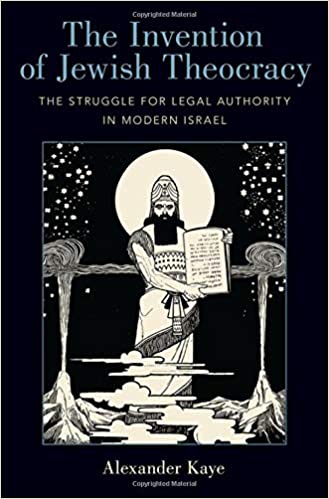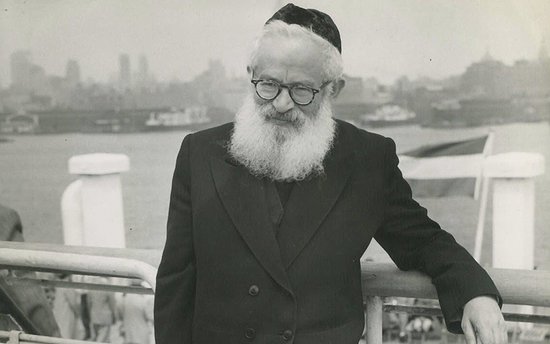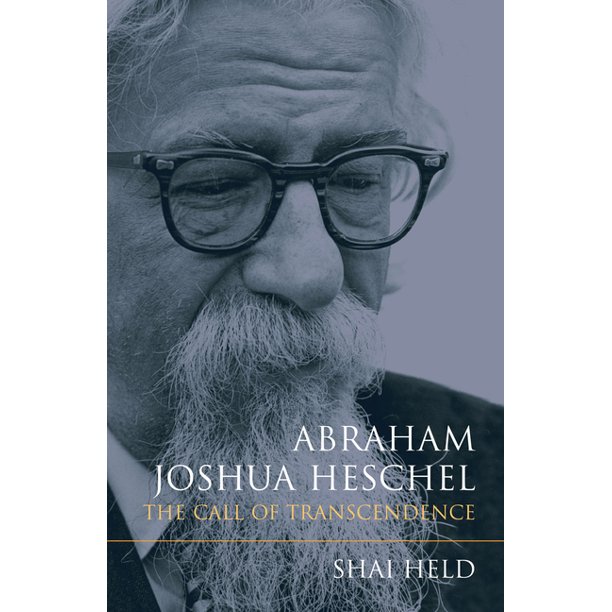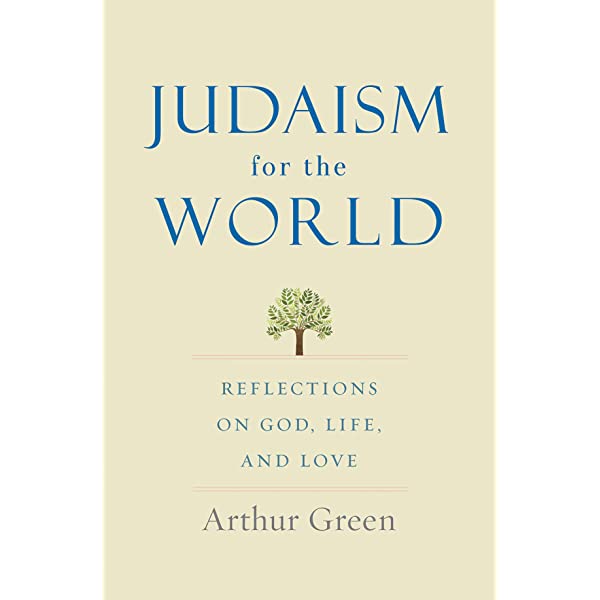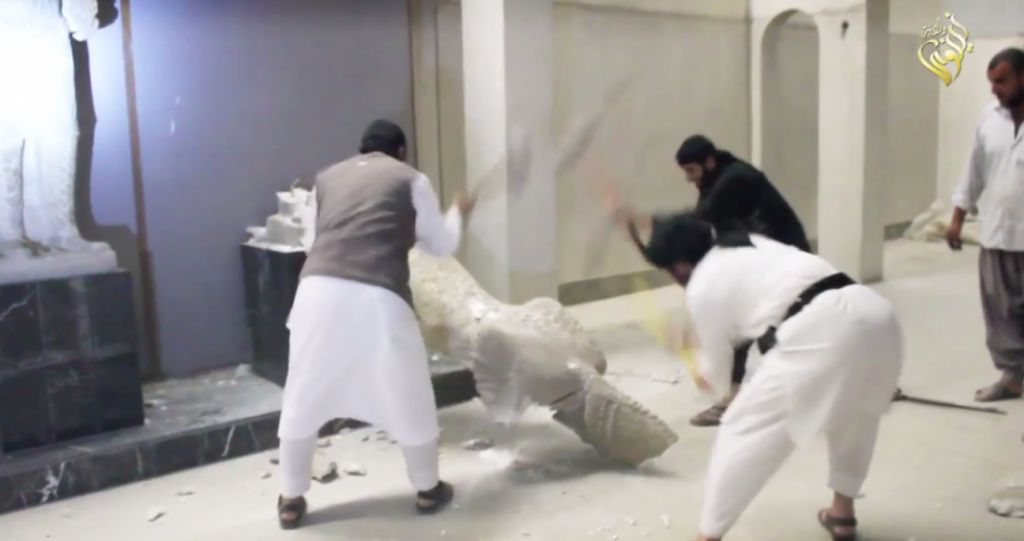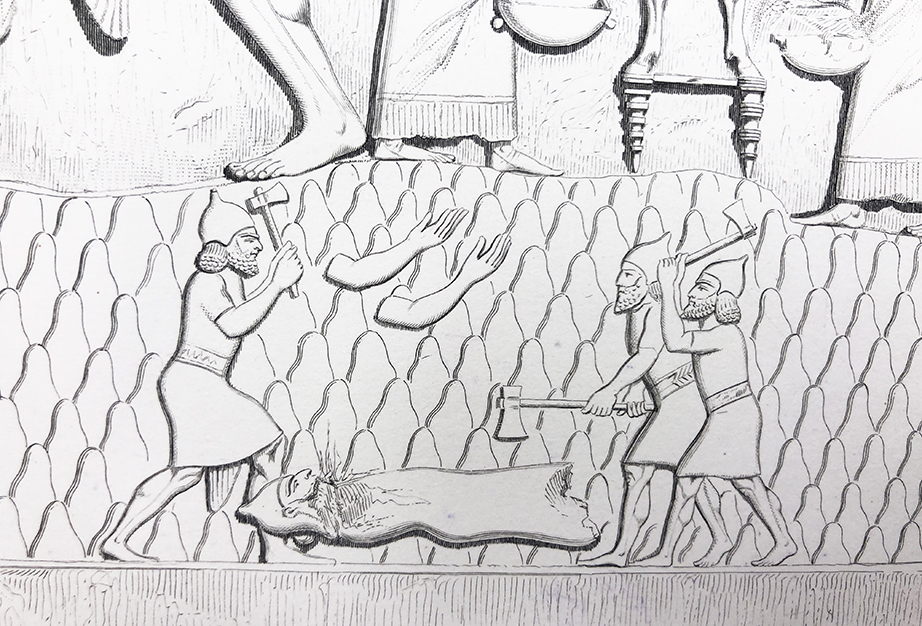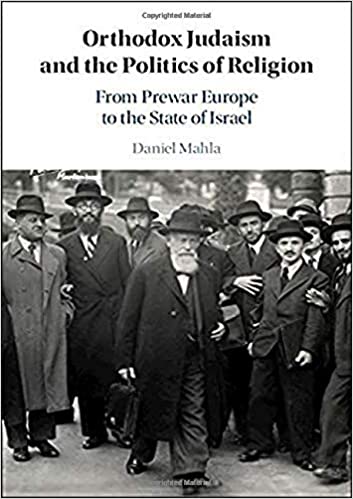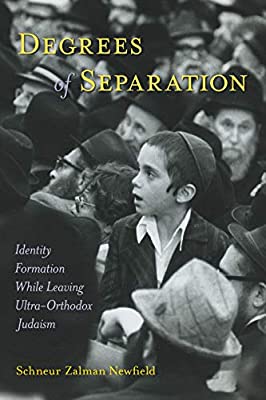Can one construct an Orthodox Judaism that does not create an intrinsic distinction between Jew and non-Jew? Can one envision an Orthodox Judaism that focuses on knowledge of God and the imitation of God aided by the Aristotelian concepts of intellectual and moral virtue? Can one make the other commandments subservient to universal ones? This is the goal of the recent book Maimonides the Universalist: The Ethical Horizons of the Mishneh Torah (The Littman Library of Jewish Civilization, 2020) by Menachem Keller and David Gillis who use Maimonides as their ideal vision of Judaism.

This review is basically on the single book Maimonides the Universalist: The Ethical Horizons of the Mishneh Torah (The Littman Library of Jewish Civilization, 2020) by Menachem Keller and David Gillis, but also its intersection with David Gillis Reading Maimonides’ Mishneh Torah (Littman Library of Jewish Civilization, 2014) and Menachem Kellner and James Diamond, Reinventing Maimonides in Contemporary Jewish Thought (The Littman Library of Jewish Civilization, 2019).
Menachem Kellner is the Chair of the Philosophy and Jewish Thought Department at Shalem College. His prior position was at the University of Haifa for 33 years. He is the author of over 25 books and was interviewed twice before on this blog. Kellner’s basic focus in most of his books is how to have an ethical and rational Maimonides, which is part Hermann Cohen’s Maimonides via Steven Schwatzchild (Kellner’s doctorate advisor) and part a spiritualized and carefully selected selection of Maimonides’s ideas that fights the battles against the farshtunken and perverse thinkers that Kellner openly disapproves of their thought including: Ultra-Orthodoxy, Kabbalists, and those who think Jews are superior to gentiles.
David Gillis, a student of Kellner’s, who did not chose academia as a profession, wrote a very nice book back a number of years ago called Reading Maimonides’ Mishneh Torah (Littman Library of Jewish Civilization, 2014). In that work, Gillis shows how the organization of the laws in the entire Mishneh Torah is shaped by the medieval cosmology at the start of the Principles of the Torah.(yesodei hatorah) This book on universalism has a fine summery of Gillis’ thesis, useful for showing how the keeping of the law is in accord with the rational structure of the cosmos.

The third book of that intersects here, Menachem Kellner and James Diamond, Reinventing Maimonides in Contemporary Jewish Thought (The Littman Library of Jewish Civilization, 2019) where the Kellner sections show how much the Ultra-Orthodox approach and even the world of Rabbi Soloveitchik deviate from Kellner’s ideal Maimonides.
In this book, Maimonides the Universalist the authors focus on the closing statements of each of the 14 books of Maimonides Mishneh Torah where Maimonides always gives a philosophic exhortation and universal rational for the laws of that section. They claim that these statements are the key to understanding Maimonides. They perform a close reading and fine-tuned analysis of these statements to construct a universal Maimonides, one that thinks anyone philosophic and ethical is performing God’s will. They are especially interested in showing that this even applies to mizvot that are seemingly not universal such as circumcision, purim, or tefillin. Their readings are sensitive, careful, and thoughtful.
Universalism is the main rubric of the book, but along the way we get the best exposition of the role of philosophy in the specifics of the Mishneh Torah, better than found in any other scholarly book. Most of topics presented by Prof Isadore Twersky in his magisterial Introduction to the Code of Maimonides (1982) are given a fresh turn in this book, presented as crystal-clear arguments. An important topic such as the reasons for the commandments in Maimonides thought as the naturalistic perfection of the body and soul, as providing ethical, intellectual, and social organization is detailed with exact quotes. It also gained the cosmic element from Gillis’ work. We also see the importance of science in Maimonides as the true object of study. Finally, the analytic presentation of Maimonides view of the messianic age is rich, detailed, and superb.
Yet, the authors themselves are aware of an implicit tension in their approach. Maimonides did not care about or refer to non-Jews in his thinking. In their reading, Maimonides was never thinking goyim; they were never on his mind. Maimonides, in this reading, remains provincial and parochial. According to Maimonides, Aristotle could merit the world to come as a rational and moral person. Since Aristotle, could do this even though he was not a Jew then Maimonides can be labeled as universalist. Personally, I find it a funny use of the word universal. It is what Michael Waltzer calls a “low flying universalism” rather than one that makes demands to go out of one’s comfort zone.
Nevertheless, this book belongs in the hands of anyone who teaches the philosophic halakhah of Maimonides, anyone who teaches topics such as slavery, ethics, or messianism in Maimonidean philosophic law. This book should be a valuable part of the essential library of the High School rabbi or pulpit rabbi looking to give a universalist defense of Judaism. The authors of this book have a sharp eye and acute ear for parallels between passages and echoes to discussions elsewhere in the text. As a literary reading of Maimonides the book is without equal.
But at this point, I part company with this book and most books of Kellner. Kellner is highly selective in his reading of Maimonides avoiding the Aristotelian, Platonic, skeptical, mystical, illuminationist, and pietistic elements of the great rationalist’s thought. Kellner champions a Maimonides of his own modern design, at points slipping into Hermann Cohen, Buber, or Steven S. Schwarzschild.
I find it anachronistic to appeal to Maimonides’ use of 12th century science as a model for a 21st century universalism for modern Orthodoxy without further comment. If your book is prescriptive, then we should be looking for our universal worldview at the 21st century options such as transhumanism, the Anthropocene, RNA vaccine production, or the genome project. Or are we limited to thinking Maimonides advocated meteorology as did the medieval ibn Tibbons.
After I finished the interview, I asked Menachem Kellner some of my issues with his approach and he graciously responded. First, I asked him about his creating Maimonidean halakhah as an ideal type that never actually existed. His Maimonides is idiosyncratic and does not actually reflect Maimonidean reception or with any halakhic approach. To which he answered: “And Rav Soloveitchik’s view of halakhah is not an ideal type? There is no doubt that the overwhelming majority of poskim are not Maimonideans in the sense that Rambam would have wanted them to be. It would be foolish to deny that… Poskim do not evaluate halakhah based on the universalism of yesodei hatorah. They do not see such evaluations as part of halakhic thinking.”
Beyond that, this reading of Maimonides is very similar to many a Salafi Islamic rational thinker for whom Salafi/Wahabi Islam is rational and universal because knowledge of God and ethics are universal. Anyone can be Muslim. The presentation of Maimonides is very similar to the universalism in Islamic dawa found in the articles from Al-Azhar University in Cairo. I have met many an Islamic scholar for whom Islam is the universal truth for everyone to accept without limits based on tribe or people. To which Kellner answered: “And therefore? What’s the problem? Personally, I think that Rambam would be committed to a view articulated by my late teacher, Steven Schwarzchild, according to which there can “Jewish Non-Jews.” I doubt very much that Rambam the historical figure would have said such a thing, but were the implications of his positions pointed out to him, he might very well have agreed.”
The book is written as a Modern Orthodox book whose major function is to reject Haredi positions. Ultimately, I felt the book was heroically going through an already open door. I am not sure that most people need this book to not consider an intrinsic distinction between Jew and non-Jew. And most do not see the return to medieval Aristotelianism and a Neo-Maimonideanism position as thoughtfully pursuing science or philosophy. A medieval rational universalism is rather ethnic and provincial in focus. But we do need this book to continue refining our understanding of Maimonides and in that it has nicely covered new ground.
Interview with Kellner and Gillis
- What is new in this book Maimonides the Universalist?
Maimonides the Universalist is the first systematic, full-length study of an intriguing literary feature of Rambam’s Mishneh Torah, namely the endings of each of its fourteen books, where the discussion goes beyond halakhah proper in a peroration that is often impassioned, even lyrical. If Judaism can be considered to have a universal pole and a particularist pole, we find that these endings have a universal polarity.
Much of Menachem Kellner’s writing has focused on the combination of halakhah, Aristotelian science, history, and messianism in Maimonidean thought leading to an understanding of his consistent universalism, his rejection of claims (held before him by Halevi, and after him by Kabbalah and kabbalistically inflected Judaism) to the effect that there is some sort of ontological/metaphysical/inherent distinction between Jews as such and non-Jews as such. Human beings —all human beings— are truly and fully created in the image of God.
David Gillis in his Reading Maimonides’ Mishneh Torah (2015), shows that while the major content of the Mishneh Torah is the commandments, the book has a universal philosophical message expressed in its structure.
Kellner’s studies have demonstrated that halakhah is a tool, not an end in and of itself for Rambam, and that the Mishneh Torah should therefore be understood as a tool the purpose of which is better expressed in the closing statements of many sections.
2. What does universalism mean? Why is it important?
We do not attempt a universal definition of universalism, as it were. We talk about it in a Jewish context. In that context, it means that there is no inherent difference between Jews and non-Jews, and that the same concept of human perfection applies to Jews as to all human beings.
We do not regard Maimonidean universalism as transcending Judaism. Rambam establishes as commandments of the Torah the knowledge of God and the imitation of God. He illuminates these commandments with the aid of Aristotelian concepts of intellectual and moral virtue, and regards them as imperatives for any thinking person, but they nevertheless remain the essence of the Torah as far as he is concerned, and he makes the other commandments, down to the most particularist of them, serve these primary, universal ones. Universalism thus does not transcend the Torah; it is the Torah properly understood.
Lest it be thought that we personally want to live in Rambam’s world, let us make clear that we understand that Rambam might be one of the open society’s enemies criticized by Karl Popper, and that his vision of liberty is not the one that Isaiah Berlin and we prefer .Rambam, was convinced that truth is one, objective, and unchanging. If virtue is knowledge, then ignorance of the truth is immoral and also a form of mental illness.
3. How is circumcision, a sign of particularity, a universal image in Maimonides? How is Abraham universal?
Abraham is one of Rambam’s two great heroes – the other being Moses. In Rambam’s portrayal of him at the beginning of “Laws of Idolatry,” Abraham is the re-discoverer of monotheism after humankind’s lapse into idolatry. The emphasis is on his intellectual journey rather than on his role as the progenitor of the Jewish people. Out of a superabundant love of God, he sought to bring others to recognition of the truth, by means of persuasion and personal example, and he gathered around him a large community of believers.
The main custodians of the truth, however, were Abraham’s descendants, and when they relapsed into idolatry, they were rescued from it by Moses, through the Torah. The Torah communicates as tradition, and embodies in ritual, the truths that Abraham discovered. Its ultimate aim, however, is to prepare its adherents to work out these truths for themselves, to recapitulate Abraham’s experience. So Moses transmitted a particular law to a particular people, but the example that it champions is the universal one of Abraham.
This is seen consistently on the frequent occasions in the Mishneh Torah that Rambam mentions Abraham and Moses together. Abraham is presented as the personification of an idea that Moses formalizes as law. For example, towards the end of “Laws of Repentance,” Rambam describes Abraham as exemplifying the rapturous love of God to the exclusion of all other concerns, and then states the Mosaic commandment “and thou shalt love the Lord thy God.”
Circumcision exists on both the universal, Abrahamic plane and the particular, Mosaic plane. In Rambam’s view, as expressed in the reasons provided for circumcision in the Guide of the Perplexed, it was practiced by Abraham and his followers as a means of restraining disruptive sexual desire and promoting social solidarity, and as sign of belief in the one God. It was instituted as a binding law by Moses, not Abraham, and as such it could certainly be taken as a badge of tribal belonging, but its ultimate aim is the recapture of the universal Abrahamic ideal.
4. Would that mean that most Islamic rational thought that traces the religion to Abraham be rational?
Clearly not everything traced to Abraham is universal. Circumcision is enjoined upon his descendants (including those descended from his second wife, Keturah), but not upon moral monotheists outside of the orbit of Judaism and Islam who follow the Seven Noachide commandments on the basis of rational considerations (who are called wise in “Laws of Kings”, 8:11, even if they are not allowed residence in a Maimonidean Jewish state, since they do not accept the Torah, the constitution of such a state).
To the extent that Islamic rational thought is true, then, yes, it is universal. Rambam insisted that Islam is thoroughly monotheist, which means that its conception of God is both rational and universal.
5. How are Purim and Hanukah seen as universal?
Rambam takes two festivals which are clearly associated with Jewish– Gentile warfare and makes their ultimate message one of peace among all human beings. Through a conjunction with the laws of Sotah and of Shabbat candles, Rambam indicates that the meaning of both Hanukah and Purim is to be found in a messianic future of peace among all nations. He ignores the bellicose nature of the special prayer added to the liturgy on these holidays (al ha-nissim), and focuses on the message of universal peace. This is similar to the way in which he takes the figure of Elijah, a prophet presented in the Bible as unrelentingly vengeful (recall in particular his encounter with the prophets of Ba’al in 1 Kings 18), and makes him a messianic harbinger of universal peace.
6. How does Mishneh Torah set out a hierarchy of commandments to reflect the structure of the hierarchal universe?
In the Mishneh Torah, Rambam establishes a hierarchy of the commandments. He configured the Mishneh Torah as a microcosm, its structure reflecting the hierarchical universe in which he thought he lived (See David Gillis’s book Reading Maimonides Mishneh Torah). In Rambam’s picture of the universe there are ten orders of angels that produce and control the spheres containing the stars and planets; and four elements of terrestrial matter. Correspondingly, the Mishneh Torah comprises ten books on the heavenly-oriented commandments between human beings and God, and four on the earthbound social commandments.
The angels and spheres, as intelligent beings, are superior to the four elements, while they themselves exist in a hierarchy according to the level of knowledge of God that each possesses. The arrangement of the commandments in the Mishneh Torah reflects this cosmic hierarchy. The first ten books are ordered in accordance with the degree to which they deal directly with the knowledge of God, the Book of Knowledge unsurprisingly coming first, while this intellectual aspiration is nobler than the material concerns of the commandments in the last four books that regulate the social order.
7. How is the rejection of slavery at the end of the laws of slaves universal? How would you define or characterize the ethic outside of halakhah shown in that law?
In our reading, what is interesting about the ethic shown at the end of “Laws of Slaves,” namely that a non-Jewish slave must be treated with the utmost consideration despite a Torah provision that implies otherwise, is that it is an ethic within halakhah. This is contrary to the consensus approach to the passage in question, which is that it is an example of lifnim mishurat hadin, of supererogatory behavior (which may or may not be an ethic outside of halakhah, but that is a whole other controversy).
We see Rambam as being much bolder than the consensus would have it. As we have mentioned, he determines that there is a positive commandment to imitate God, one of the 613 commandments. This, in the Mishneh Torah at least, means the cultivation of inward character traits that reflect the attributes of God’s actions in the world as enumerated in Exodus 34: 6: merciful, gracious, long-suffering, and so on. These traits are universal not only in the sense that they represent an ideal to which all people ought to aspire, but also in the sense that they are indivisible, and should therefore find universal expression in one’s dealings with any human being.
Hence for halakhah to permit demeaning treatment of a non-Jewish slave amounts to a contradiction within with the ideal of cultivating character traits. Rambam however has a graduated approach to fulfilment of the commandments.
The hierarchical structure discussed in the last question holds the answer, in that, Maimonides prioritizes the universalist commandment to imitate God found in book 1 over the provision allowing discrimination against a non-Jewish slave found in book 12.
Allied to the notion of prioritization is the notion of accommodation, that the Torah is adapted to actual social conditions. This is most famously seen in Rambam’s explanation of sacrifices as a concession to conventions of worship prevalent at the time the Torah was given. The late R. Nachum Rabinovitch suggested that the discriminatory provisions in “Laws of Slaves” could be seen as a somewhat similar accommodation to social and economic reality.
Faithful as he was to the sources of halakhah, Rambam records these provisions, but at the same time, in impassioned rhetoric, he calls for them not to be taken as signifying Jewish supremacy or as cues for cruelty, and appeals instead for humanity and recognition of essential equality, culminating in citation of the verse “And His mercy is over all His works” (which we adopt as the motto of our book).
He does so, we argue, not from a perspective outside of halakhah, but from a rigorously constructed scale of value within halakhah in which the ethical imperative overrides, even if it cannot cancel, the provisions in question. This allows Rambam to espouse the universal while accommodating the particular, which we regard as not the least of his extraordinary achievements.
8. What is the highest form of Torah study for Maimonides?
In order to fulfill the commandment of loving God with all one’s heart and soul, “one must, therefore, be single-minded in studying and reflecting on the disciplines and sciences that give him such knowledge of his Master as humans can understand and apprehend,” (“Laws of Repentance”, 10: 6).
Thus chapters 2-4 of the Mishneh Torah’s opening section “Laws of the Foundations of the Torah” provide a summary of medieval science. Rambam identifies this science with pardes. In “Laws of Torah Study”, the third section of the Mishneh Torah’s first book, he includes pardes in the most advanced stage of the Torah curriculum. Thus the highest form of Torah study for Rambam is the science and philosophy discovered by Abraham, which formed part of an elite rabbinic tradition that was lost (Guide i. 71), and that Rambam sought to restore with help from Aristotle and his followers..
9. At several points in the book, you say Maimonides was oblivious to non-Jews. Why did Maimonides take this approach? Why reject the universalism that includes non-Jews of Shem Tov on III:51?
It seems that the simplest answer to the question is the Mishneh Torah is a work of halakhah addressed to people who are commanded to obey the Torah’s commandments in this world, i.e., Jews.
Rambam certainly thought that non-Jews could achieve a share in the world to come (to the extent that he thought anyone could, a debated subject in academic circles, which we will not address here). Both Abraham and Aristotle were non-Jews. As to Abraham, we assume that no one reading this will deny his place in the world come; as to Aristotle, Rambam wrote to Shmuel ibn Tibbon that Aristotle achieved the highest level of perfection open to human beings just short of prophecy. This is not something Rambam said about Hazal, and if he thought that they could reach a share in the world to come, it would be hard for him to deny such a share to Aristotle.
Shem Tov on Guide iii.51 thought that Rambam taught there that non-Jewish physicists were closer to God than non-physicist rabbis. That is likely Rambam’s position (assuming the physicists in question were moral human beings) but it is not, we think, what Rambam was talking about there in iii.51.
10. How do the commandments serve the purpose of holiness?
It is easy to show that Rambam’s view of the commandments do not reflect antecedent ontological distinctions in the universe. As we have outlined, we do see the arrangement of the commandments in the Mishneh Torah as analogous to the structure of the cosmos, but there is no actual connection between the commandments and cosmic reality.
Tum’ah (ritual impurity), for example, is defined entirely by halakhah. If one could invent a tum’ahmometer, as it were, it would indicate nothing when passed over something defined by halakhah as tame.
What, then, is their function? Rambam rules in the introduction to his Book of the Commandments that general imperatives in the Torah such as “be holy” do not count as independent commandments for the purposes of listing the canonical total of 613. Rather, “be holy” amounts to saying “keep all the commandments.” We may conclude that the telos of the commandments is holiness.
What does Rambam mean by “holiness”? Jews were not given the commandments because they are holy, nor were they made holy by having been given the commandments. Rather, they become holy when they fulfil the commandments. This does not mean that as one fulfils commandments one’s ontological status changes from profane to holy; rather, it means that “holiness” is the way in which Rambam’s Torah characterizes obedience to the commandments.
Holiness for Rambam thus means the outcome of a kind of behavior. It is nothing that can be said to exist in and of itself, it is not some sort of superadded essence, it is nothing ontological. It is rather a name given to certain extremely important and highly valued types of behavior, and, by extension, to persons, places, times, and objects. It is, and this is a point that must be emphasized, something that is not given, but must be earned. Holiness is not an inheritable status.
The hierarchy of the first ten books of the Mishneh Torah referred to earlier can be described as a hierarchy of holiness. It ascends from the external holiness of place in the books dealing with the Temple (books eight, nine and ten) to the ultimate domain of holiness, the intellect, which is the domain of the commandments in the first book, the Book of Knowledge. It means a turning away from the material desires and bodily appetites towards the apprehension of God. This is the process that the prophet, the highest rank of human being, is described as undergoing in “Laws of the Foundations of the Torah,” 7: 1, sanctifying himself through detachment from temporal concerns, detaching himself from temporal concerns and perfecting his knowledge of God’s “wisdom”, i.e. the laws of nature, until eventually “the holy spirit rests upon him.”
For a greater details see our discussion of the remarkable passage that ends the Book of Agriculture in “Laws of the Sabbatical Year and the Jubilee,” 13: 13
11. How is Rav Soloveitchik’s thought an opposite of Maimonides?
Soloveitchik revered Rambam, but the rational approach to the reasons for the commandments expounded in the Guide of the Perplexed disappointed him. It failed to match his sense of the grandeur of halakhah as an autonomous system, a way of comprehending the world at least on a par with natural science, but proudly separate from it, standing in no need of justifying itself before any philosophical tribunal.
In part three of the Guide, Rambam first posits the universal rational goals of the welfare of the body and the welfare of the soul, and then proceeds to demonstrate how each of the commandments promotes their attainment. Soloveitchik felt that such an approach could not possibly motivate religious observance or satisfy a religious sensibility. But in the Mishneh Torah, he found, the point of departure is halakhah itself, halakhah unbound. The justification for halakhah in that work lies in the inner world, the “subjective correlative” as he describes it in The Halakhic Mind, that observance of halakhah brings about. This, he felt, reflects the authentic Jewish experience.
Simply reading the opening paragraphs of the Mishneh Torah is enough to shake Soloveitchik’s view of the halakhah. Rambam begins with certain axioms concerning the philosophical idea of a “First Existence,” before announcing that this First Existence is the God of the world (note not the God of Israel) and making the first citation of a commandment in the Mishneh Torah, “I am the Lord thy God.”
Just as in the Guide, the commandment is related to an antecedent philosophical principle. Similarly, in the second section of the Mishneh Torah, “Laws of Moral Qualities,” Rambam first discusses the Aristotelian idea of moral virtue as cultivation of the mean between extremes of temperament, and then declares that the commandment “And you shall walk in His ways” refers to this idea. The commandments of the knowledge and imitation of God are thus based on philosophical premises. Maimonides sees the rest of the commandments as supportive of these primary ones. This entails that, ultimately, they are all philosophically motivated.
At the same time, we believe that Soloveitchik’s idea of subjective correlative does come into play in the Mishneh Torah.
For Rambam, most strangely to us, moral psychology and cosmology are formally similar. The microcosmic form of the Mishneh Torah outlined earlier implies that observance and study of halakhah perfects human beings by shaping their minds and mores according to the perfect form and functioning of what he saw as a living, intelligent cosmos. In other words, the “subjective correlative” is the human microcosm, and the object with which it correlates, or ought to correlate, is the macrocosm, the created universe as understood by science.
This confirms the tendency identified above in the opening of its first two sections: the Mishneh Torah in its entirety is served by and serves the very science and philosophy from which Soloveitchik thought it had declared independence. It does not promote the formation of an autonomous halakhic world view.
12. What is Maimonides’ view of the Messiah?
Rambam’s naturalist and universalist vision of the messianic era challenges Jews to make the world messiah-worthy. The peak of messianism for Rambam is thus to bring all human beings to the point where they abandon idolatry (and all that idolatry stands for, namely, brutality and stupidity) and embrace monotheism.
So far as we know, our book contains the first complete presentation of all of Rambam’s messianic texts in English.
The key passage reads as follows:
“The Sages and Prophets did not long for the days of the messiah that they might exercise dominion over the world, or rule over the nations, or be exalted by the peoples, and not in order to eat and drink and rejoice, but so that they be free to devote themselves to the Torah and its wisdom, with no one to oppress or disturb them, and thus be worthy of life in the world to come, as we explained in “Laws of Repentance.” Then there will be neither famine nor war, neither jealousy nor strife. Good things will be abundant, and delicacies as common as dust. The one preoccupation of the whole world will be only to know [lada’at] the Lord. Hence [Israel] will be very wise, knowing [yodim] things now unknown and will apprehend knowledge [da’at] of their Creator to the utmost capacity of the human mind, as it is written: “For the land shall be full (ki malah ha’arets) of the knowledge [de’ah] of the Lord, as the waters cover the sea” [Isa. 11: 9].”
Who “will apprehend knowledge [da’at] of their Creator to the utmost capacity of the human mind?” Printed editions have for generations written that it will be “Israel.” However, that word is not found in the best manuscripts. Is it Israel, as the printed editions have it, or all human beings as the best manuscripts seem to teach? In our book, we prove (at least to our satisfaction) that the manuscripts are correct and that the addition of the word “Israel” here is an attempt, conscious or not, to restrict the fullest possible knowledge of God to Jews only, and not to all human beings.
Rambam’s understanding of world history is that it is not God’s original intention to choose the Jews. As Rambam explains in Laws of Idolatry ch. 1, Abraham chose God, not the other way round. Had the first individual to discover God through rational means after humanity had degenerated into paganism been a Navajo philosopher, then the Torah would have been written in the Navajo language, its narratives would have reflected the history of the Navajo people, and its commandments would have sought to purify, sanctify, and exalt the Navajo way of life. But the Torah in its innermost essence would not be different; it would teach the same truths it teaches today, only clothed differently.
Rambam’s messianic universalism is also an outgrowth of his understanding of the nature of humanity. In this Jews and non-Jews are precisely alike, created in the image of God. Only those who actualize their intellectual potential can be said to have realized the image of God potentially in them.
However, such actualization is very hard work and can only be achieved by highly disciplined individuals living lives of self-restraint. It is in this sense that Rambam (and other medieval philosophers, Jews, Muslims, and Christians, working in the Aristotelian tradition) was convinced that a morally dissolute person could not possibly be a philosopher. In the perfected messianic world, all peoples will be able to realize the faith of Abraham.
In Kellner’s next book (We are Not Alone: A Maimonidean Theology of the Other – Academic Studies Press, 2021) it is shown that Rambam’s messianism allows us to live in hope and therefore work for a better future: what is, is not what must be.



